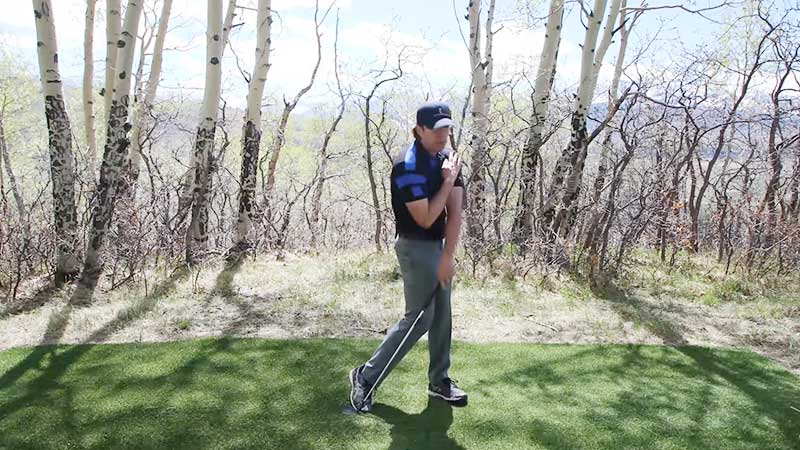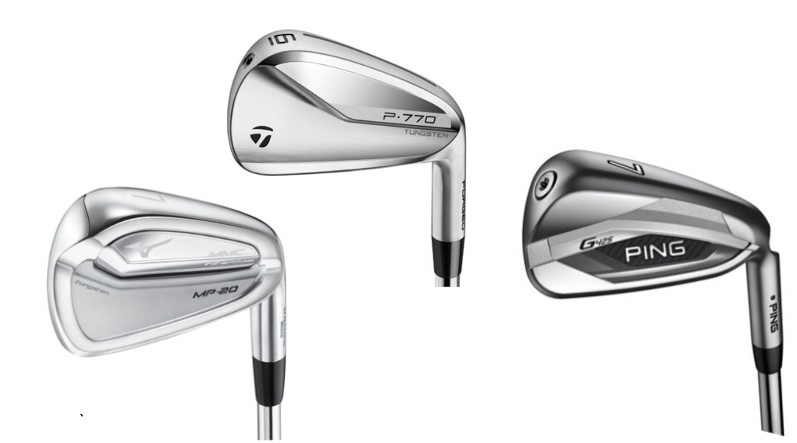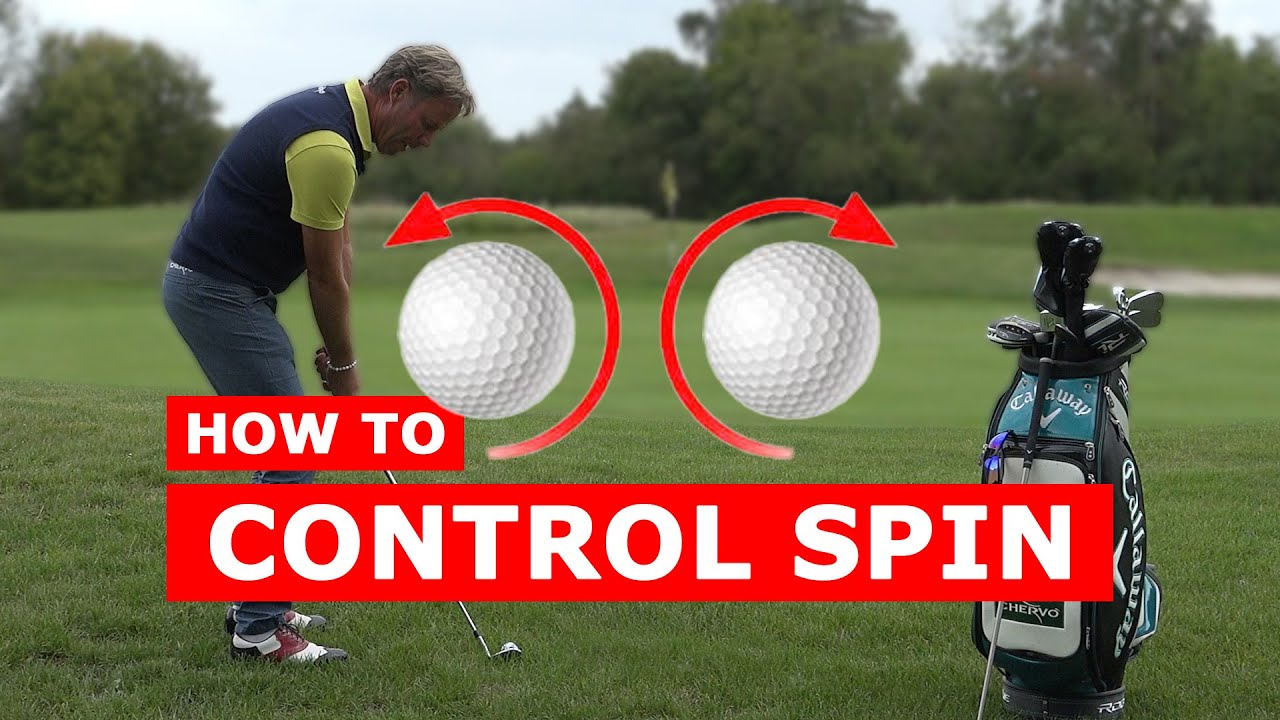Playing Golf with a Torn Rotator Cuff: Tips for a Strong Swing
Playing golf with a torn rotator cuff is not recommended due to the risk of exacerbating the injury. Golf swings involve repetitive motions that may worsen the tear in the rotator cuff, leading to inflammation and pain.
It is crucial to consult a doctor before playing any sport with a rotator cuff injury to determine the extent of the damage and receive proper treatment. In this article, we will discuss the rotator cuff, its functions, symptoms of a torn rotator cuff, and ways to treat and prevent further damage.
We will also provide tips on how to modify your golf swing to avoid aggravating the injury and alternative activities to consider while recovering.

Credit: www.metroleague.org
Understanding A Torn Rotator Cuff Injury And Its Impact On Golfing
Playing golf with a torn rotator cuff can be painful and even cause permanent damage if not treated properly. A torn rotator cuff is a common injury among golfers, especially those who play frequently. If you’re experiencing pain, discomfort, or decreased mobility in your shoulder while playing golf, it could be a sign of a torn rotator cuff.
Understanding what a rotator cuff injury is and its impact on golfing is crucial to ensure you seek timely medical attention. We’ll take a closer look at this injury and how it affects golfers.
An Overview Of Rotator Cuff Injuries
The rotator cuff is a collection of four muscles and their tendons that connect the upper arm bone to the shoulder blade. These muscles and tendons work together to provide stability and allow for shoulder movement. Rotator cuff injuries can vary from mild to severe, and golfers are especially prone to these injuries due to the repetitive motions involved in swinging a golf club.
Here are some common types of rotator cuff injuries:
- Rotator cuff tendinitis or tendinosis, which is inflammation or degeneration of the rotator cuff tendons
- Rotator cuff tears, which can be partial or complete
- Subacromial bursitis, which is inflammation of the fluid-filled sac that helps to protect the rotator cuff
The Effects Of A Torn Rotator Cuff On Playing Golf
A torn rotator cuff can significantly impact a golfer’s ability to play. Once a golfer has a rotator cuff injury, performing everyday activities like lifting or even reaching overhead can be difficult, let alone hitting a golf ball. Golfers with a torn rotator cuff may experience pain, weakness, and limited range of motion in the shoulder.
Here are some effects of a torn rotator cuff on playing golf:
- Difficulty swinging a golf club, especially during certain aspects of the swing like the backswing or follow-through
- Decreased accuracy and distance due to pain and limited shoulder mobility
- Inability to practice frequently as a result of pain and discomfort
Importance Of Seeking Medical Attention To Avoid Worsening The Injury
It’s important to seek medical attention as soon as possible if you suspect you have a torn rotator cuff. If left untreated, a rotator cuff injury can worsen, leading to permanent damage and even the need for surgery. While some mild rotator cuff injuries can be treated with rest, ice, and physical therapy, severe injuries may require surgery.
Some tips for avoiding a torn rotator cuff include:
- Warming up before playing golf
- Stretching before and after playing golf
- Using proper technique when swinging a golf club
- Taking breaks when needed
Playing golf with a torn rotator cuff can be challenging and dangerous. A proper understanding of the injury and its impact on golfing can help golfers prevent further damage and seek necessary medical attention. Follow these tips to keep your shoulders healthy and avoid a torn rotator cuff, and if you experience signs of a tear, don’t hesitate to see a doctor for advice.
Preparing For Golfing With A Torn Rotator Cuff
Golfing with a torn rotator cuff can be challenging and intimidating, but it doesn’t have to keep you from playing the game you love. By following some specific tips and techniques, golfers can find a way to manage their pain and continue playing the sport.
This article focuses on preparing for golfing with a torn rotator cuff.
Stretches And Exercises To Help Alleviate Pain And Strengthen The Shoulder
If you want to play golf without pain and maximize your shoulder mobility, then try stretching before and after your game. Here are some exercises recommended by physiotherapists that can help you alleviate pain and strengthen your shoulder:
- Pendulum swing: Swing your arm back and forth keeping your elbow straight while you bend forward at the waist.
- External rotation: Stand with your elbow bent, holding a lightweight (1-2kg), lift your hand away from your body, and rotate your arm outward.
- Shoulder blade squeeze: Stand tall, bring your shoulder blades together, and hold this position for 10 seconds.
Modifications To Pre-Game And Post-Game Routines
Modifying your pre-game and post-game routines is essential to avoid aggravating your rotator cuff injury while playing golf. Here are some useful tips to help you:
Pre-game routine:
- Warm-up: Warming up before the game is important, and it’s essential to avoid the risk of further damage to your shoulder.
- Swing gently: Start your game with gentler swings and gradually work your way into full-range swings.
- Use proper posture: Stand up straight, and make sure you use the correct posture when hitting the ball.
Post-game routine:
- Ice it: Applying ice after playing can be helpful to reduce inflammation and pain.
- Rest: Rest your shoulder after playing, and avoid any significant activities that may strain your injury.
Selection Of A Suitable Golf Bag And Clubs
Choosing the right golf bag and clubs can significantly improve your game while reducing the strain on your rotator cuff. Here are some tips to help you choose the right golf bag and clubs:
- Look for an adjustable strap: Make sure your golf bag has an adjustable strap, so you can adjust it to fit your shoulder correctly.
- Lightweight clubs: Use lightweight clubs that put less strain on your shoulder.
- Hybrids or shorter clubs: Consider using hybrids or shorter clubs for better control and less strain on your shoulder.
Playing golf with a rotator cuff injury can be a daunting task, but following these tips can help you manage your pain and minimize your risk of further injury. By incorporating these techniques, you’ll be able to continue playing golf and enjoying the sport you love.
Tips For A Strong Golf Swing With A Torn Rotator Cuff
Golf is a game that requires a lot of physical effort and technique. Injuries are common when playing golf, especially a torn rotator cuff, a common shoulder injury. A torn rotator cuff can significantly impact your golf game as it affects the ability to swing properly and can cause discomfort and pain.
However, there are ways to mitigate the issue and improve your golf swing, even with a torn rotator cuff. Here are some tips to help you maintain a strong golf swing with a torn rotator cuff.
Importance Of Posture And Form When Swinging With An Injury
Your golf swing requires proper posture and form. Here are some key points to consider when swinging with a torn rotator cuff:
- Proper posture and stance: Maintain a wide and stable base, with your feet slightly apart. Keep your spine straight and your shoulders balanced.
- Relaxed stance: Your grip should be relaxed and not too tight, helping reduce any unwanted pressure on your shoulder.
- Avoid exaggerating the backswing: Avoid a backswing that is too high, or that swings too far behind your body, as this requires a lot of shoulder muscle use and increases the risk of further injury.
- Keep your lead arm straight: Your lead arm (left arm for right-handed golfers) should remain straight during the backswing, helping reduce stress on your shoulder.
Utilizing Proper Swing Techniques To Avoid Further Damage
It is important to remain aware of how you swing and use proper technique to avoid further damage when golfing with a torn rotator cuff injury. Here are some key points to consider:
- Use shorter shots: Keep your shots short and accurate, avoiding long and forceful swings that require more shoulder strength and movement.
- Avoid twisting your torso too much: Focus on turning your hips and shoulders, reducing the amount of twisting in your torso, as this puts unnecessary pressure on your shoulder.
- Use your lower body: Use your legs and hips to generate power and momentum, allowing your upper body to take a break.
- Keep your elbows close to your body: Keep your elbows close to your torso, helping reduce unnecessary movement, which can affect your shoulder.
Modifications To Grip And Swing Power
When golfing with a torn rotator cuff, modifying your grip and swing power can reduce your chances of further injury and discomfort. Here are some key points to consider:
- Modify your grip: Consider using a golfer’s lift or tee to help reduce the amount of gripping and pressure required on your shoulder.
- Avoid hitting the ground: Place the ball on a tee to avoid hitting the ground during your swings, as it requires more effort and places additional strain on your shoulder.
- Use lighter clubs: Consider using lighter clubs as they put less stress on your shoulder muscles, reducing the chances of further injury.
- Reduce the power of your swing: Limit the amount of power you put behind each shot, using more gentler swings to help avoid overexerting your shoulder.
Golfing with a torn rotator cuff can be challenging, but by following these tips, you can help to reduce pain and decrease the risk of further injury. It is essential to remember that proper form, technique, and modifications to your grip and swing power can significantly enhance your golf game, even with a torn rotator cuff injury.
Strategies For Managing Pain And Discomfort On The Course
Many golf enthusiasts find it challenging to play with a torn rotator cuff. The pain and discomfort can be unbearable, which may lead to long-term injuries if not addressed. Fortunately, there are several strategies that golfers can use to manage the pain and discomfort on the course.
In this post, we’ll explore these strategies and how they can help you enjoy playing golf despite your injury.
Identifying Warning Signs To Avoid Injury And Pain
Playing with a torn rotator cuff requires careful attention to your body. Some warning signs to look out for include:
- Shooting pain in your shoulder after a swing
- Pain when you try to raise your arm
- Muscle weakness in your shoulder
- Pain that worsens when you try to sleep on the affected side
If you experience any of these warning signs, it’s best to rest before attempting another swing to avoid further injury and pain.
Incorporating Breaks And Rest Into The Golf Game
Playing the entire round of golf without any breaks can increase the risk of aggravating your torn rotator cuff. Therefore, incorporating short breaks into the game can go a long way in reducing pain and discomfort. Here are some techniques that you can use:
- Take regular breaks in between shots
- Stretch your shoulder muscles often
- Reduce the number of swings you take during the game
By incorporating these breaks and rest into your game, you’ll reduce the intensity of the pain and keep your muscles refreshed.
Making Adjustments To Swing Techniques To Alleviate Pain
When playing golf with a torn rotator cuff, you’ll need to modify some swing techniques to alleviate pain and avoid further aggravation. Here are some ways to adjust your golf swing techniques:
- Shorten your swing to reduce the range of motion required by your shoulder.
- Alter your stance: Consider widening your stance and slowing down your swing.
- Avoid shots that require too much effort, such as hitting from challenging lies.
By making these adjustments, you’ll alleviate pain and discomfort while improving your swing.
Playing golf with a torn rotator cuff can be challenging, but it’s not impossible. By using these strategies for managing pain and discomfort, you can continue to play golf and enjoy the game. Remember to listen to your body and avoid overexertion whenever possible.
With these tips, you can get back on the course with renewed confidence and a better game.
Frequently Asked Questions On Can You Play Golf With A Torn Rotator Cuff
Can A Torn Rotator Cuff Heal On Its Own?
It is possible for a torn rotator cuff to heal on its own, but it can take several months. Surgery may be necessary for larger tears.
Can You Play Golf With A Small Rotator Cuff Tear?
It is possible to play golf with a small rotator cuff tear, but it may cause pain and potentially further damage. Consult with a doctor.
What Exercises Can Worsen A Rotator Cuff Tear?
Exercises that involve overhead movements or rapid shoulder movement can worsen a rotator cuffs tear, such as pull-ups or tennis serves. Consult with a doctor.
Conclusion
Playing golf with a torn rotator cuff can be challenging but not impossible. It ultimately depends on the severity of the injury and the individual’s pain tolerance. Taking proper precautions such as consulting with a medical professional, modifying one’s swing or technique, and incorporating physical therapy exercises can aid in the healing process and prevent further damage.
Golfers with a torn rotator cuff can still enjoy the game by being careful, listening to their bodies, and not pushing themselves beyond their limits. It is essential to prioritize one’s health and take the necessary steps to recover before returning to the game.
With patience, perseverance, and proper care, golfers with a torn rotator cuff can continue to play the sport they love. So don’t let a torn rotator cuff stop you from hitting the links and enjoying the beautiful game of golf.



